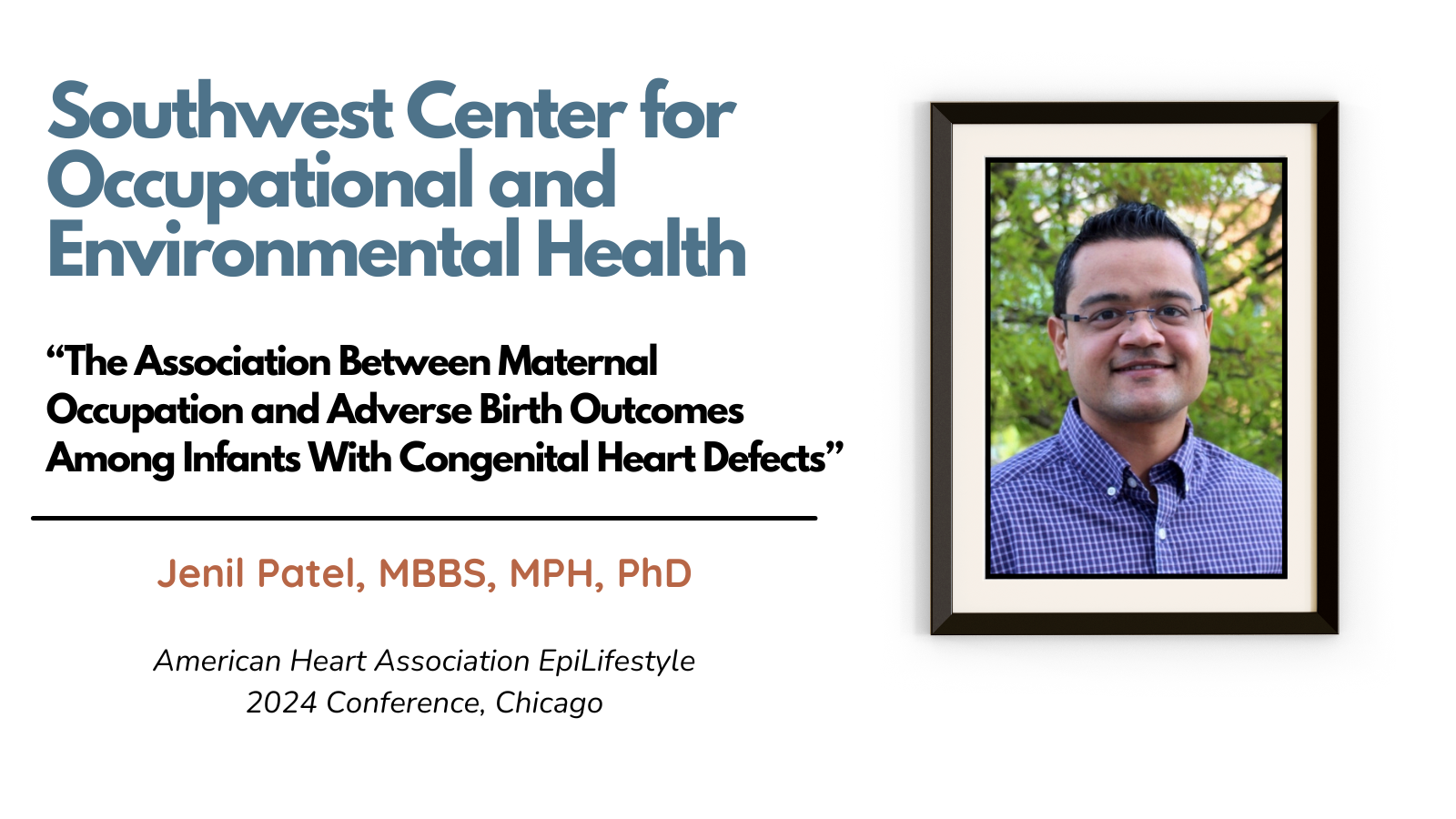
Patel presents study on maternal occupation and adverse birth outcomes among infants with congenital heart defects at AHA EpiLifestyle Conference 2024
Dr. Jenil Patel, MBBS, MPH, PhD, faculty at UTHealth Houston School of Public Health in Dallas, presented a study in March at the American Heart Association EpiLifestyle 2024 Conference in Chicago. The study ‘The Association Between Maternal Occupation and Adverse Birth Outcomes Among Infants With Congenital Heart Defects’, was authored by Lola Oluwafemi, a doctoral student in epidemiology at the School of Public Health.
The study describes the results of Ms. Oluwafemi’s pilot project, that was awarded through the Southwest Center for Occupational and Environmental Health (SWCOEH) Pilot Projects Research Training Program (PPRTP). Dr. Patel is director of the PPRTP and the occupational epidemiology doctoral training program at the SWCOEH. He served as Ms. Oluwafemi’s mentor and senior author on the project. The study was co-authored by Dr. A.J. Agopian and Dr. Renata Benjamin from the School of Public Health, Dr. David Gimeno from the University of Texas School of Public Health San Antonio and Dr. Charles Shumate from the Texas Department of State Health Services.
To learn more, we asked Dr. Patel about the study.
SWCOEH.org: Describe your role as mentor to Ms. Oluwafemi on this project.
Dr. Patel: “Lola is a doctoral student at our school and she completed this pilot project as my mentee and graduate research assistant. The research team worked in close collaboration with the Texas Department of State Health Services.”
SWCOEH.org: What drove your interest in this topic?
Dr. Patel: “My existing work and research interests are in perinatal, birth defects, and occupational epidemiology. We have previously found positive associations between several occupational exposures such as polycyclic aromatic hydrocarbons (PAHs) and certain birth defects such as congenital heart defects (CHDs). As part of follow-up, we were interested in assessing the proportion of low birth weight and preterm-affected pregnancies among infants with CHDs and investigating whether these outcomes were associated with occupational exposures”
SWCOEH.org: What were your main findings?
Dr. Patel: “Food preparation occupations were positively associated with preterm birth (Odds ratio (OR): 1.67; 95% confidence interval (CI): 1.17-2.38), while arts/entertainment occupations were negatively associated with low birth weight (OR: 0.30; 95% CI: 0.11-0.84).”
SWCOEH.org: What surprised you about the results?
Dr. Patel: “These findings may align with previous reports that suggest that mothers in food preparation occupations may engage in behaviors linked to adverse pregnancy outcomes in the general population, such as insufficient folic acid supplementation, delayed prenatal care, tobacco smoking, and drinking. Also, there are external exposures such as PAHS, ambient air, chemicals that are more prevalent in some food-related occupations compared to home/office-based environments, which might explain the results.”
Acknowledgement: Funding support for this project was provided by the Southwest Center for Occupational and Environmmental Health, Centers for Disease Control and Prevention, National Institute for Occupational Safety and Health (#T42OH008421) at The University of Texas Health Science Center at Houston School of Public Health; Texas Birth Defects Epidemiology and Surveillance Branch, Texas Department of State Health Services Maternal and Child Health Block V Grant; and (Texas Department Of State Health Services), Centers for Disease Control and Prevention Cooperative Agreement (#NU50DD000102).
The SWCOEH provides graduate-level training opportunities for occupational and environmental health professionals through our industrial hygiene, occupational and environmental medicine, occupational epidemiology, and Total Worker Health® programs.

